Comments / Questions (23)
![]() Julia wrote:
Julia wrote:
Hallo, ich habe in Gr. M bei der Passe 285 M. Wenn ich nun an den Ärmeln weitere 4 Male zunehme, komme ich auf insgesamt 4x4M = 16M und nicht wie in der Anleitung angegeben auf 24 M. Was stimmt hier? Mfg
16.04.2025 - 17:07DROPS Design answered:
Liebe Julia, um diese 285 Maschen zu erhalten, haben Sie insgesamt 20 Mal bei den Ärmeln (und Rumpfteil) zugenommen, jetzt nehmen Sie noch 4 Mal nur bei den Ärmeln = so sind es insgesamt 24 Mal - und 2 Maschen x 4 Mal x 2 Ärmel = 16 M + 285=301 Maschen. Viel Spaß beim Stricken!
22.04.2025 - 10:25
![]() Julia wrote:
Julia wrote:
Hallo, ich habe in Gr. M bei der Passe 285 M. Wenn ich nun an den Ärmeln weitere 4 Male zunehme, komme ich auf insgesamt 4x4M = 16M und nicht wie in der Anleitung angegeben auf 24 M. Was stimmt hier? Mfg
13.04.2025 - 22:59
![]() Maya wrote:
Maya wrote:
Was heißt bei der Passe "Nun weiter A.5". Soll nur über die Maschen, in denen auch in der vorherigen Reihe A.5 gestrickt wurde, nun wieder A.5 gestrickt werden? Und dazwischen glatt rechts? Oder soll die ganze Reihe durchgängig A.5 gestrickt werden abzüglich der Blendenmaschen?
02.03.2025 - 23:16DROPS Design answered:
Liebe Maya, wenn Sie 121-125-129-133-137-141 Maschen auf der Nadel haben, stricken Sie jetzt die BlendenMaschen wie zuvor, stricken Sie A.5 weiter wie bei der 1. Reihe beschrieben, und alle anderen Maschen stricken Sie glattrechts. Viel Spaß beim Stricken!
03.03.2025 - 11:10
![]() Maud Tano wrote:
Maud Tano wrote:
Gäller kofta i drops nepal! Mönster 206-26 Se tidigare mail! Hej. Har nu klurat ut det där med ökningen, behöver inte svar på det men skulle vilja se bild på mönstret bakifrån?
12.02.2025 - 10:45DROPS Design answered:
Hej Maud, se DROPS 206-27 :)
12.02.2025 - 15:09
![]() Maud Tano wrote:
Maud Tano wrote:
Jag har just börjat sticka denna kofta! Har redan stött på problem! Ska mönstret A5 vara på baksidan också? Finns ingen bild på koftan bakifrån? Ska ökningen till ärmarna gå parallellt med ökningarna runt A5 eller när de ökningarna är klara?
11.02.2025 - 10:21DROPS Design answered:
Hej Maud, jo ryggen vil se ud som tröjan du finder længere nede i opskriften 206-27 :)
12.02.2025 - 15:07
![]() Jessica Käll wrote:
Jessica Käll wrote:
Hej! Stickar storlek XL och har rätt antal maskor på framstyckena 57 maskor samt ärmarna 61 maskor när totalt 27 ökningar gjorts MEN på bakstycket bara 97 maskor det blir dock 105 när omslagen på mönstret räknas in. Ska jag fortsätta att öka lr är det rätt då?
02.05.2024 - 13:11DROPS Design answered:
Hej Jessica, når du er færdig med udtagningerne skal du have 341 masker = 57 (61m ærme) 105m (61m ærme) 57 m. Du fortsætter over 57+8+105+8+57=235 masker
03.05.2024 - 14:47
![]() Avril wrote:
Avril wrote:
I’m enjoying knitting this pattern . At the end of the main body instructions it says to increase a certain number of stitches and to work A6 over A5. It then says to change needles and work the ribbing. Please could you confirm that before I do the ribbing I complete all 4 rows of A6. \r\nThank you.
03.01.2024 - 17:44DROPS Design answered:
Hi Avril, Yes, it is neatest if you finish A.6 before working the rib. Happy knitting!
04.01.2024 - 07:56
![]() Lil wrote:
Lil wrote:
I made 2 of these. Had to re-write thebpattern to change the increases because I dodnt like how the pattern increases look. But what an amazing look. My mother loved hers
20.05.2022 - 17:31
![]() Gun Carne wrote:
Gun Carne wrote:
I diagrammet A4 för storlek XL en vimpel där spetsen visas till höger vad betyder den? Har försökt sticka detta mönster i en hel vecka stickat o repat upp, vägrar att ge upp. Tänkte om jag stickar en annan storlek, kanske det skulle lösa sig o att jag skulle förstå bättre. Då möts jag av problem som detta på engång. Har läst om förklaringar, hur man läser diagram men hittar inget svar. Vore så kul att kunna sticka denna kofta , blir glad för alla tips.
05.03.2021 - 07:13DROPS Design answered:
Hej Gun, Vi skal få lagt til en symbolforklaring til denne også. Tak for info :)
05.03.2021 - 13:18
![]() Gun Carne wrote:
Gun Carne wrote:
Hej hoppas på hjälp, jag stickar i storlek L. Har rätt antal maskor efter att jag börjat med halskant 121 maskor när jag börjar med OK så efter första varvet har jag 113 maskor, när det ska vara 129. Jag har räknat 7 maskor till ärmar och det stämmer, Nu har jag försökt sticka detta två gånger o varje gång blir det fel här 113 maskor verkar mer logisk eftersom man minskar med en maska i A5 4 gånger. Jag får det inte rätt. Hoppas på hjälp.
19.02.2021 - 16:11DROPS Design answered:
Hej Gun. Det är nog dessvärre vi som skrivit det lite otydligt, det är efter du har stickat ett varv tillbaka du har det antalet maskor på stickan. Den textraden om antal maskor har nu flyttats till efter nästa varv. Tack för info! Mvh DROPS Design
22.02.2021 - 12:11
Roses at Dawn Jacket#rosesatdawnjacket |
|||||||||||||||||||||||||
 |
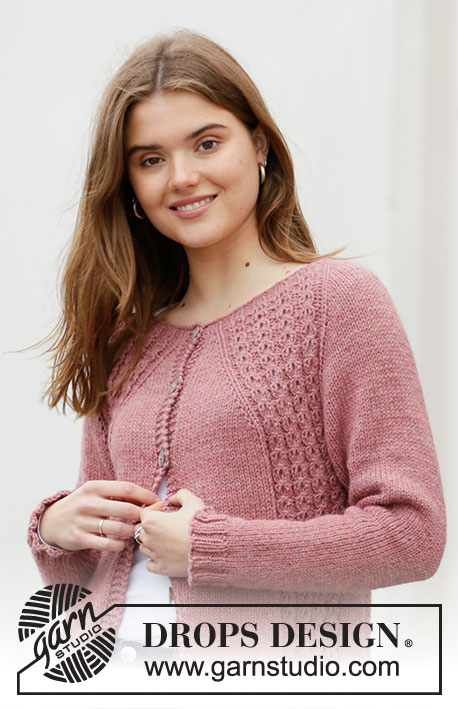 |
||||||||||||||||||||||||
Knitted jacket with raglan in DROPS Nepal. Piece is knitted top down with cables. Size: S - XXXL
DROPS 206-26 |
|||||||||||||||||||||||||
|
---------------------------------------------------------- EXPLANATION FOR THE PATTERN: ---------------------------------------------------------- GARTER STITCH (back and forth): Knit all rows. 1 ridge vertically = knit 2 rows. PATTERN: See diagrams A.1 to A.6. Choose diagram for your size. RAGLAN: Increase 1 stitch on each side of every repetition of A.5 (= 8 stitches increased on round). Increase 1 stitch by making 1 yarn over. On next row (from wrong side) purl yarn over twisted to avoid holes. Then work the new stitches in stockinette stitch. DECREASE TIP (applies to sleeves): Decrease 1 stitch on each side of marker thread as follows: Work until 3 stitches remain before marker thread and knit 2 together, knit 2 (marker thread is between these stitches), slip 1 stitch knitwise, knit 1, pass slipped stitch over stitch worked. INCREASE TIP (evenly): To calculate how to increase evenly, count the stitches to be increased (e.g. 19 stitches) and divide this number by stitches of increases to be done (e.g. 6) = 3.1. In this example increase by making 1 yarn over after approx. every 3rd stitch. On next row work yarn overs twisted to avoid holes. BUTTONHOLES: Decrease for buttonholes on right band (when garment is worn). Decrease from right side when 3 stitches remain on row as follows: Make 1 yarn over, knit the next 2 stitches together, knit last stitch. On next row knit yarn over to make holes. Decrease first buttonhole when rib in neck measures approx. 1½-2 cm = ½"-¾". Then decrease the next 6-6-6-7-7-7 buttonholes, approx. 8½-8½-9-8-8½-8½ cm = 3¼"-3¼"-3½"-3⅛"-3¼"-3¼" between each. ---------------------------------------------------------- START THE PIECE HERE: ---------------------------------------------------------- JACKET - SHORT OVERVIEW OF THE PIECE: Worked back and forth on circular needle, top down. Work sleeves in the round on double pointed needles/a short circular needle, top down. NECK EDGE: Cast on 97-100-100-112-112-116 stitches on circular needle size 4.5 mm = US 7 with Nepal. Purl 1 row from wrong side, then work rib as follows from right side: 4 band stitches in GARTER STITCH - read explanation above, work A.1 (= 1-1-1-5-5-5 stitches), work A.2 (= 20 stitches), knit 3, work A.2 (= 20 stitches), work A.3 (= 1-4-4-8-8-12 stitches), work A.2 (= 20 stitches), knit 3, work A.2 (= 20 stitches), work A.4 (= 1-1-1-5-5-5 stitches) and 4 band stitches in garter stitch. Continue back and forth like this until the 6 rows in diagrams have been worked vertically and remember BUTTONHOLES - read explanation above. There are now 113-117-121-125-129-133 stitches on needle. YOKE: Switch to circular needle size 5.5 mm = US 9. Work next row as follows (right side): 4 band stitches in garter stitch, Knit 1-2-3-4-5-6, work A.5 (= 24 stitches) over A.2 (= left front piece), * 1 yarn over, knit 1, *, work from *-* 3 times in total, 1 yarn over (= 7 stitches sleeve), work A.5 * (= 24 stitches) over A.2, knit 1-3-5-7-9-11 (= mid back), and work A.5 (= 24 stitches) over A.2 (= back piece), * 1 yarn over, knit 1 *, work from *-* 3 times in total, 1 yarn over (= 7 stitches sleeve), work A.5 (= 24 stitches) over A.2, knit 1-2-3-4-5-6 and 4 band stitches in garter stitch (= right front piece). Work 1 row in pattern, purl the 4 yarn overs in each side over each sleeve twisted to avoid holes = 121-125-129-133-137-141 stitches on needle. REMEMBER THE KNITTING GAUGE! Now continue with A.5, 4 band stitches in garter stitch in each side towards mid front and stockinette stitch over the remaining stitches, AT THE SAME TIME on first row increase 1 stitch on each side of every A.5 for RAGLAN – read explanation above. Increase like this every other row 18-20-22-25-27-31 times in total = 265-285-305-333-353-389 stitches. Now continue increase on sleeves 4-4-3-2-1-0 more times (= 22-24-25-27-28-31 stitches increased in each side of sleeves), work the remaining stitches in pattern as before. When all increases are done there are 281-301-317-341-357-389 stitches on row. Piece measures approx. 25-27-28-30-31-34 cm = 9¾"-10⅝"-11"-11¾"-12¼"-13⅜" from cast-on edge and down mid front. Work as before but without increases until piece measures 26-28-29-31-33-35 cm = 10¼"-11"-11⅜"-12¼"-13"-13¾" from cast-on edge and down mid front. Work next row as follows: Work the first 47-50-53-57-60-65 stitches (= front piece), slip the next 51-55-57-61-63-69 stitches on a stitch holder (= sleeve), cast on 6-6-8-8-10-10 new stitches on needle (= in the side under sleeve), work the next 85-91-97-105-111-121 stitches (= back piece), slip the next 51-55-57-61-63-69 stitches on a stitch holder (= sleeve), cast on 6-6-8-8-10-10 new stitches on needle (= in the side under sleeve), work the remaining 47-50-53-57-60-65 stitches (= front piece). NOW MEASURE PIECE FROM HERE! BODY: There are now 191-203-219-235-251-271 stitches for body. Continue back and forth with A.5 as before, 4 band stitches in garter stitch towards mid front and stockinette stitch over the remaining stitches. When piece measures 26-26-27-27-27-27 cm = 10¼"-10¼"-10⅝"-10⅝"-10⅝"-10⅝" from division – adjust to finish after a whole repetition of A.5 vertically, work pattern as follows (right side): 4 band stitches in garter stitch, stockinette stitch over the next 19-22-25-29-32-37 stitches and increase at the same time 6-3-4-4-5-4 stitches evenly – read INCREASE TIP, work A.6 (= 24 stitches) over A.5, stockinette stitch over the next 6-6-8-8-10-10 stitches and increase at the same time 2-2-0-0-2-2 stitches evenly, work A.6 (= 24 stitches) over A.5, stockinette stitch over the next 37-43-49-57-63-73 stitches and increase at the same time 11-9-11-15-17-19 stitches evenly, work A.6 (= 24 stitches) over A.5, stockinette stitch over the next 6-6-8-8-10-10 stitches and increase at the same time 2-2-0-0-2-2 stitches evenly, work A.6 (= 24 stitches) over A.5, stockinette stitch over the next 19-22-25-29-32-37 stitches and increase at the same time 6-3-4-4-5-4 stitches evenly, and finish with 4 band stitches in garter stitch = 202-206-222-242-266-286 stitches on needle. Switch to circular needle size 4.5 mm = US 7. Now work rib as follows from wrong side: 4 band stitches in garter stitch, * purl 2, knit 2 *, work from *-* until 6 stitches remain on needle, purl 2 and 4 band stitches in garter stitch – NOTE: Rib should fit knit over knit and purl over purl over stitches in A.6. When rib measures 4 cm = 1½", binding off with knit over knit and purl over purl. Jacket measures approx. 56-58-60-62-64-66 cm = 22"-22¾"-23⅝"-24⅜"-25¼"-26" from shoulder and down. SLEEVE: Slip the 51-55-57-61-63-69 stitches on stitch holder in one side back on a short circular needle/double pointed needles size 5.5 mm = US 9 and pick in addition up 1 stitch in each of the 6-6-8-8-10-10 stitches cast on under sleeves = 57-61-65-69-73-79 stitches. Insert a marker thread in the middle of the 6-6-8-8-10-10 new stitches under sleeve (= 3-3-4-4-5-5 new stitches on each side of marker thread). Work in stockinette stitch in the round. When sleeve measures 4 cm = 1½" from division, decrease 1 stitch on each side of marker thread under sleeve - read DECREASE TIP. Decrease like this approx. every 2½-2-2-1½-1½-1 cm = ⅞"-¾"-¾"-½"-½"-⅜" 11-12-13-14-16-18 times in total = 35-37-39-41-41-43 stitches. Work until sleeve measures 35-34-33-31-30-28 cm = 13¾"-13⅜"-13"-12¼"-11¾"-11" (or desired measurements, approx. 4 cm = 1½" remain until finished measurements- NOTE: Shorter measurements in the larger sizes because of wider neck and longer yoke). On next round increase 5-7-5-7-7-9 stitches evenly = 40-44-44-48-48-52 stitches. Switch to double pointed needles size 4.5 mm = US 7. Work rib (knit 2/purl 2) in the round for 4 cm = 1½". Binding off stitches with knit over knit and purl over purl. Sleeve measures approx. 39-38-37-35-34-32 cm = 15¼"-15"-14½"-13¾"-13⅜"-12½". Work the other sleeve the same way. ASSEMBLY: Sew the buttons on to the left band. |
|||||||||||||||||||||||||
Diagram explanations |
|||||||||||||||||||||||||
|
|||||||||||||||||||||||||
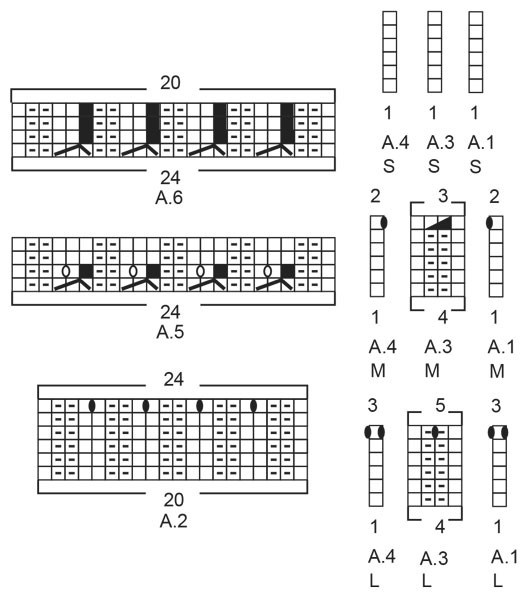
|
|||||||||||||||||||||||||
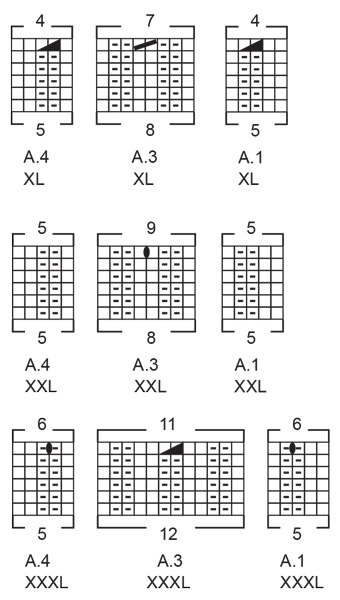
|
|||||||||||||||||||||||||
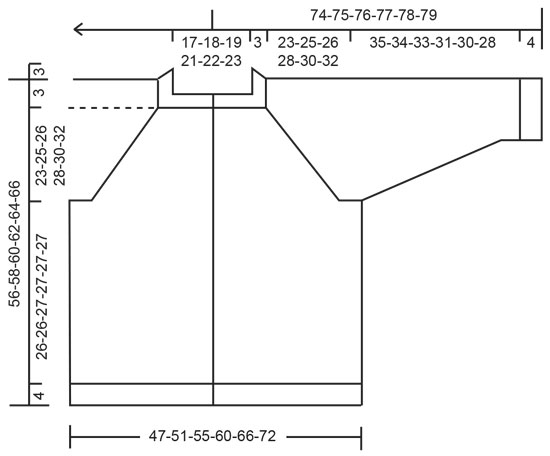
|
|||||||||||||||||||||||||
Have you finished this pattern?Tag your pictures with #dropspattern #rosesatdawnjacket or submit them to the #dropsfan gallery. Do you need help with this pattern?You'll find 27 tutorial videos, a Comments/Questions area and more by visiting the pattern on garnstudio.com. © 1982-2025 DROPS Design A/S. We reserve all rights. This document, including all its sub-sections, has copyrights. Read more about what you can do with our patterns at the bottom of each pattern on our site. |
|||||||||||||||||||||||||







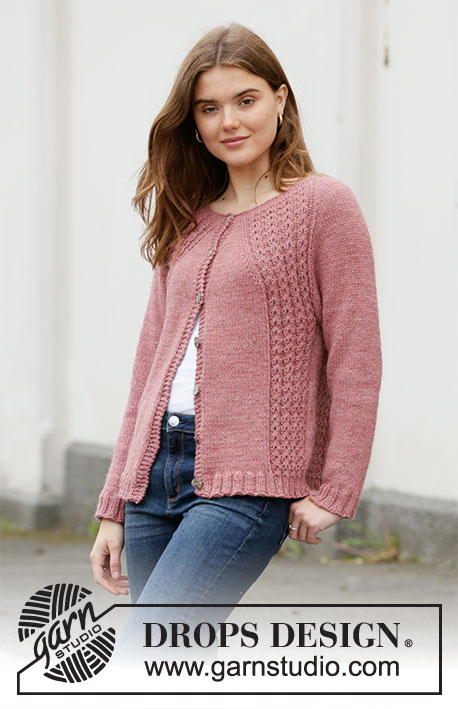
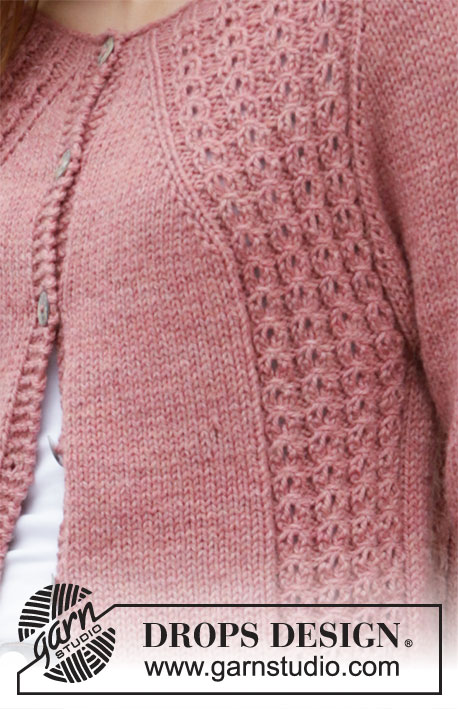

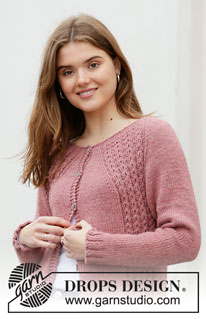
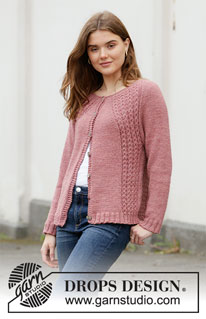
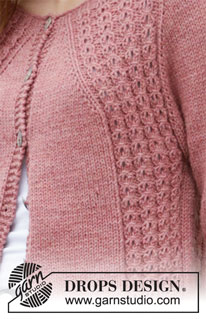




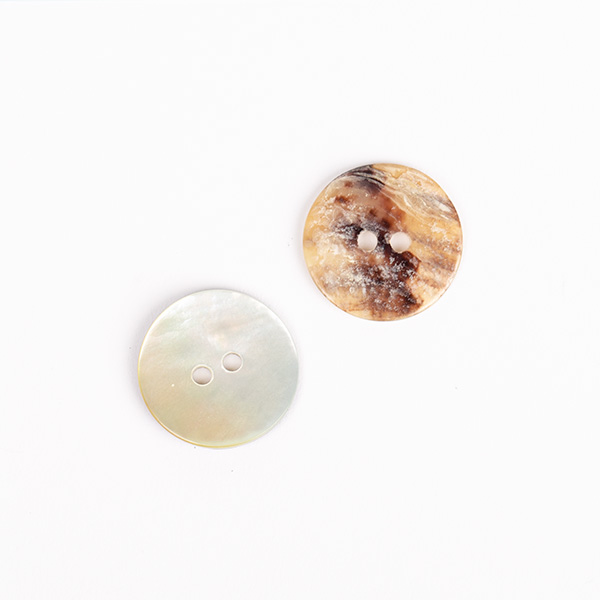



























































Post a comment to pattern DROPS 206-26
We would love to hear what you have to say about this pattern!
If you want to leave a question, please make sure you select the correct category in the form below, to speed up the answering process. Required fields are marked *.